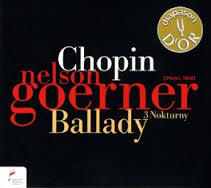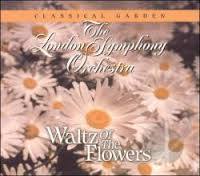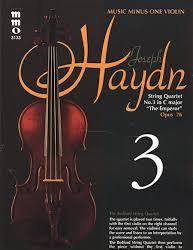Photo

11. Chopin- Nocturne in D flat Major:
This piece is absolutely beautiful. It has a very soothing, soft feel to it. In my opinion, it is both consonant and dissonant. In some passages, there are chromatic scales, which make it a little dissonant. The pianist’s left hand seems to be playing arpeggios throughout most of the piece, which support the melody the pianist is playing with the right hand. The melody is really beautiful, and I think the fact that it is really dissonant adds to that. The dynamics tend to stay soft, fluctuating between piano and probably metzo forte. An interesting thing about this piece is how often the tempo fluctuates. The soloist tends to slow down a little bit towards the end of a phrase and speeds up when a new measure begins. Also, I believe the tempo and the dynamics are related in this piece. The louder it gets, the faster the tempo may be, and the softer it gets, the soloist might slow down a bit. However, I am sure that every soloist plays the piece a different way. The piece also modulates quite a bit. It already is in a difficult key, D flat major, which probably makes it very hard to play to begin with. Adding all those accidentals to modulate it is probably very difficult for the soloist. Looking at the score, I noticed that the right hand is harmonizing in 3rds for a lot of the piece. I think this enhances the piece even more.
1 note
·
View note
Photo

10. Prokofiev Symphony 1, 1st movement:
This movement is a very light, airy sort of movement. There is a common theme that comes up a couple times modulated throughout the string section. The dynamics, I think, are very appropriate for this piece. Since the piece is light-sounding, the dynamics match that. The dynamics seem to not come above a forte. I would say the piece is usually a metzo forte. If I were thinking of people dancing in a ballroom a couple hundred years ago, I would think of this piece. Overall, this piece is very consonant sounding. There are lots of chord tones and a lot of the same themes. However, sometimes the piece modulates into a minor-sounding passage. This is very interesting because I don’t hear this in most pieces. I think the strings are highlighted in this piece. The main theme gets tossed around the string sections and everyone in the string family gets to be heard. That is one thing I like about this piece. Another thing I noticed while listening to this piece is that in a lot of passages, the dynamics change very abruptly. For instance, the violins might be playing a passage very softly and then immediately the dynamic will change from pianissimo to forte. Another interesting part of this piece is the key change. There are still the main things being passed around the string section, but it sounds different. There is a lot of arpeggios in this piece, also. It tends to happen in the lower strings or lower register instruments. That just locks down the chords and provides consonant sound and structure for the melody.
0 notes
Photo

9. Copeland- Simple Gifts:
This piece is very happy sounding. The theme in the beginning is introduced by thewoodwinds. This theme is basically the entire piece. It modulates throughout the entire orchestra, getting passed around from different instrument to different instrument. Each group of instruments modulates it a bit. One group may have the theme at a lower dynamic. Another group might modulate the theme a little bit. The entire piece starts out at a very comfortable tempo with the woodwinds playing at maybe a metzo forte. After that, the theme gets passed around from the strings, to the brass, to the woodwinds, and so on. Even though the theme might sound different getting passed along, it is still essentially the same theme throughout the entire piece. When the piece climaxes, it sounds like a very loud forte or even a fortissimo. When it settles back down and starts heading towards the end, it quiets down to a metzo forte, then to a piano. The piece is overall very consonant. It is made up of the same theme, with various chord tones harmonizing it. In my opinion, it never really sounds dissonant or conflicted. The piece has a very happy feel to it. It starts with a very comfortable tempo. Sometimes throughout the piece when one group is playing the theme, they play the theme twice as slow to make it sound more powerful. For instance, in the beginning, the theme introduced by the woodwinds sounds happy and comfortable, not exactly powerful. However, when the theme gets passed along to the brass, they might play the theme twice as slow to enhance it and make it sound more grand and powerful.
0 notes
Photo

8. Berlioz- Symphonie Fantastique, 4th Movement
This movement is about a person marching towards his death. Appropriately, themovement starts out very solemn. With the timpani and low brass, it symbolizes the man marching towards the guillotine. After the “marching” the piece gets steadily gets more and intense. The cellos start the theme, which is, again, very solemn. The piece is all around consonant. There aren’t really very many dissonant harmonies in this piece. It’s all a variation of the main theme introduced by the cellos in the beginning. About a 2 minutes into the piece, the brass introduces a more triumphant theme, sounding less solemn than the other theme. After that, the piece gets more intense. The strings have a fast, stressed-sounding passage.
The piece climaxes, symbolizing the man getting to the guillotine. Near the end, there is a loud pizz in the strings, symbolizing the man’s head getting chopped off and rolling down steps. The piece ends very triumphantly, with a brass chorale-sounding passage. Overall, this piece is, again, very consonant, with mostly chord tones. Although the movement is short, there are many contrasting parts within it. I really enjoy how the piece tells a story. You can really hear it throughout the movement. The tempo fluctuates a little bit, mostly with the more intense parts. For example, when the piece gets louder and more intense, it might speed up a little. The dynamics are a huge factor in this movement. It starts out very quiet, like a pianissimo, and then grows to a forte. During the climax of the movement, it probably grows to a fortissimo.
0 notes
Photo

7.Debussy- Clair de Lune
This piece is very unique. It is meant for a piano, but can also be played by a solo instrument with piano accompanying it. It is overall a beautiful piece. The piece is very soft, not intense at all. It reminds me of a waterfall, or nature in general. The theme of the piece, introduced in the beginning, comes back a few times throughout the piece. The harmonic structure of the piece is very interesting. For instance, when the piece is headed towards the climax, the chords and melody get more and more complex. When the piece climaxes, the chords are very complex. In the beginning, the piece and the chords are almost always consonant. Nothing sounds very conflicting yet. However, when the piece gets going, there is a little dissonance. When the piece gets to the high point, the chords sound a little conflicting, providing lots of dissonance, which I am sure the composer intended. In terms of dynamics, this piece starts with a soft piano. It is very delicate and beautiful. As it gets more and more towards the climax, the dynamics grow, getting about to a metzo forte. At the climax, it is maybe at a full forte. Also, the piece gets higher in register towards the middle of the piece. After that, it definitely dies back down to a piano. The theme comes back one last time. At the end, you think the piece is over, but then it comes back to a sort of random forte, and then dies back down to end the piece. Overall, this is a very beautiful, calm piece. Even with the climax in the middle, the piece is still very calm and soothing.
0 notes
Photo

6. Hlohonolofatsa Soweto Choir
“Hlohonolofatsa” includes a four part choir including males singing tenor and bass and females singing alto and soprano. A shaker is also used to add to the performance along with clapping towards the end of the performance. Each part of the four part choir has a solo that is then joined by another group or by the choir as a whole. The two male groups accompany each other and the females do the same for each other. The composition maintains an allegro tempo that is very upbeat and cheerful. The piece also contains a 4-4 meter, meaning there are four beats for every measure. The texture is mainly polyphonic, but it has some homophonic and monophonic parts. The solos are monophonic until another part of the choir is added, making it homophonic. The chorus is then added to the occurring melodies, making it polyphonic. Some harmony exits throughout the piece as the parts sing the same melody at the same time. The music is also fortissimo. The song is very consanant and pleasing to the ear.
0 notes
Photo

5. Liszt- La Campenella
This piece is very challenging. Looking at the sheet music, it looks all over the place.
The right hand seems to move all over the piano while the left hand accompanies it. The right hand plays a lot of arpeggios and octaves. I really enjoy this piece because of the complexity of the right hand. Overall, this piece is both chordal and dissonant at the same time. Some of the chords in the left hand are sometimes dissonant, but I think that just adds more to the piece. I looked up more about this piece, and in doing so, I learned more about the complexity of the piece. I learned that the right hand plays intervals that are over an octave. This seems very impressive to me. The piece overall is a soft, relaxing piece. It does not seem to have a pattern to me, but it has similarities within the piece.
0 notes
Photo

4. Tchaikovsky- Waltz of the Flowers
This piece is very calming. This piece is a classic, and I feel like even if you don’t like to listen to classical music, you would know this piece. This piece has been in so many movies as well. It starts out with a harp, which always sounds calming. This truly is a waltz, with a 3⁄4 time signature. It has a very strong woodwind presence in the beginning, which adds to the calming effect. The strings soon come in, and a couple minutes in, the celli have a beautiful ballad-like section. The piece sounds like it goes from major to minor a couple of times. Towards the end of the piece, it escalates to a climax, and then it ends on a high, intense note. Overall, the piece is very chordal, and it doesn’t sound dissonant at all to me. Everyone in the orchestra seems to have a good, balanced part that fits in with the other parts. I like how you can picture an actual waltz while you’re listening to the piece.
0 notes
Photo

3. Dvorak: American Quartet, 1st movement
This piece is very fun to listen to. The quartet consists of two violins, a viola, and a cello. Throughout the piece, it sounds like all the instruments are having a conversation. They pass the common motive around, not necessarily the same notes, but the same idea. The beginning part of the piece is very upbeat and fast, and the strings really have to work hard. The counting for the strings seems to be very fast and difficult, and for that reason, I think this is a very difficult piece to execute. Everything in the piece sounds very chordal. I don’t think it sounds dissonant at all. A couple minutes in, the piece changes key, but it keeps the same style throughout. A couple minutes in, the key changes and the new tempo is much more slow. A new motive is introduced in the first violins with the other strings accompanying it. After the slow section, it speeds back up, and the original motive comes back. Overall, it is a fun piece to listen to.
0 notes
Photo

2. Mozart- Symphony 40, 1st movement
This piece is very famous, especially this particular movement. There is a common motive throughout the entire piece, and it is passed around the entire orchestra. The whole piece seems to be in minor, but it modulates throughout. Like most all of Mozart’s pieces, the piece is very chordal and does not sound dissonant at all. It starts off at a low volume but gradually grows louder as the motive gets passed around the orchestra. The piece sounds very string-dominated, and I don’t hear that much of the woodwind or brass sections. In addition, the higher strings seem to play in octaves of each other for most of the piece. I think this is effective for this piece because the violins are just emphasizing the theme of the piece more. This piece does not sound very challenging at all, because the motive seems easy and that is basically what the piece is. It is at a very moderate tempo, and the tempo seems to be constant throughout the whole piece.
0 notes
Photo

1.Haydn- String Quartet C major, 3rd movement
This piece is very unique to me. The quartet consists of two violins, a viola, and a cello. There is a common motive introduced in the beginning by the first violin, and the other instruments accompany that. The piece seems to very chordal. The tempo of the piece is very relaxed, but not slow. The first violin definitely seems to dominate this piece. However, the other instruments still have a role in the piece. In some parts, the piece sounds like it’s getting slower, but that is because the individual parts have less notes. The tempo is still the same. The viola and cello work together on most parts, and the first and second violin do the same. In the beginning of the piece, it starts off in a major key. However, in the middle of the piece, it modulates to a minor key. I think this is a good thing that Haydn has done because it keeps the piece interesting while still keeping the mood and theme of the piece.
0 notes